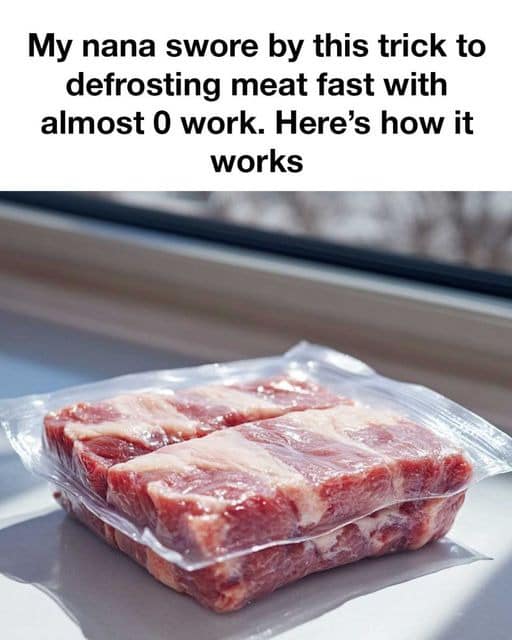Place the meat in a water-tight plastic bag if it’s not already sealed. This prevents water from seeping in and compromising the texture or flavor of the meat.
Fill a large bowl or sink with cold water. Avoid using hot water, as it promotes bacterial growth and can start to cook the meat’s outer layers prematurely.
Submerge the bagged meat in the cold water.
To keep the meat fully submerged, place a heavy object, such as a pot or pan, on top of the bag. This ensures even contact with the water on all sides.
Allow the meat to sit in the water. For best results, change the water every 30 minutes to maintain a consistent cold temperature. Most meat will defrost within 1-2 hours, depending on its size and thickness.
Tips and Tricks for Optimal Results
For the best defrosting outcomes, consider these additional tips:
Use a meat thermometer to ensure that the meat does not enter the ‘danger zone’ between 40°F and 140°F.
Plan ahead and use this method only when in a pinch; otherwise, refrigerate to defrost naturally, which retains more moisture.
Pair this method with meal prepping; for instance, divide large cuts of meat into smaller portions before freezing so they defrost more quickly next time.
Common Mistakes and How to Avoid Them
Avoid these pitfalls to ensure your meat defrosts perfectly:
Do not use hot water, as it encourages bacterial growth and can affect the meat’s texture.
Never leave meat out at room temperature to defrost as it can enter the danger zone very quickly.
Ensure the bag is tightly sealed to prevent any water from seeping in, which can dull the meat’s flavor and degrade its quality.
Frequently Asked Questions
Continued on next page 👇(page 3)👇
